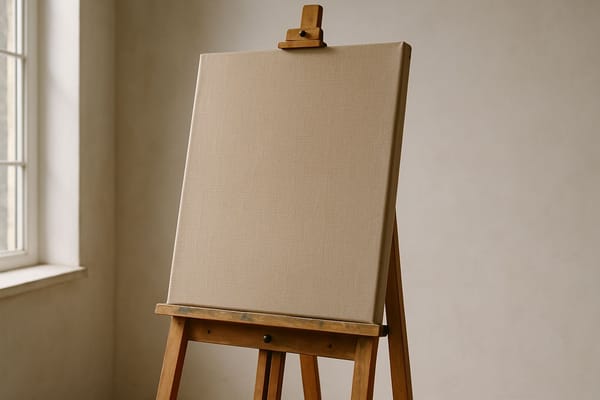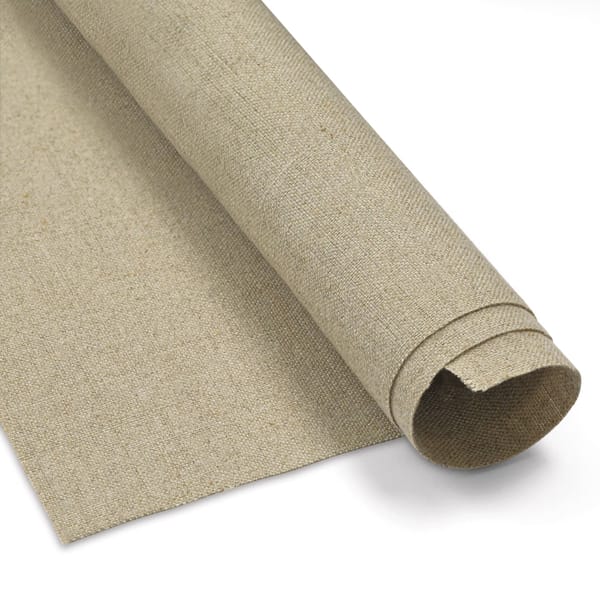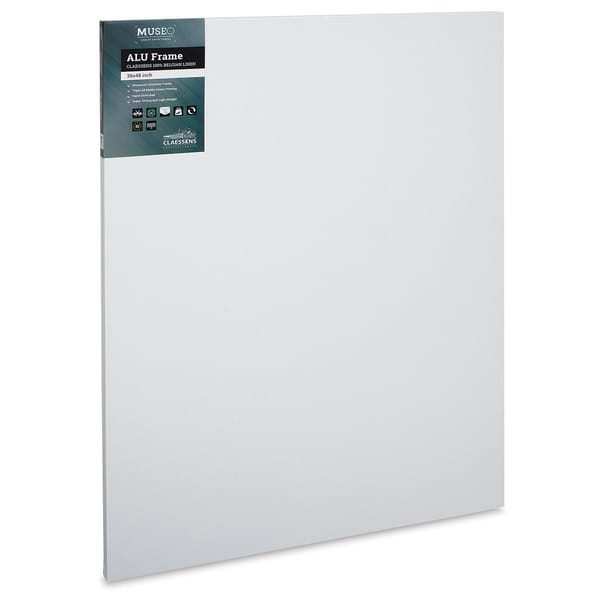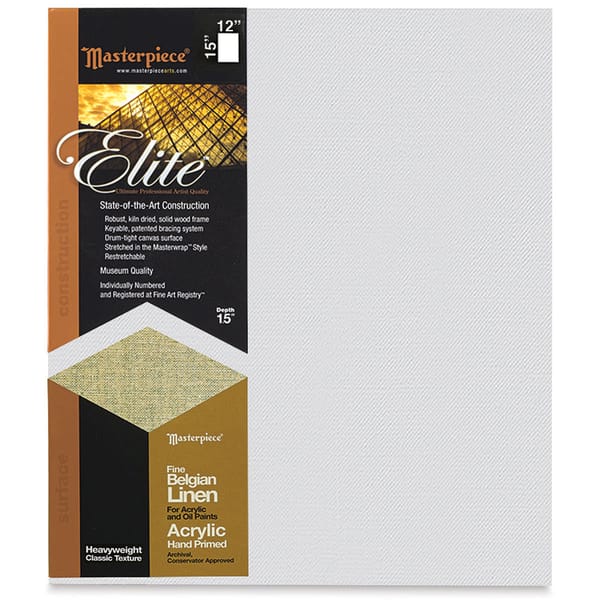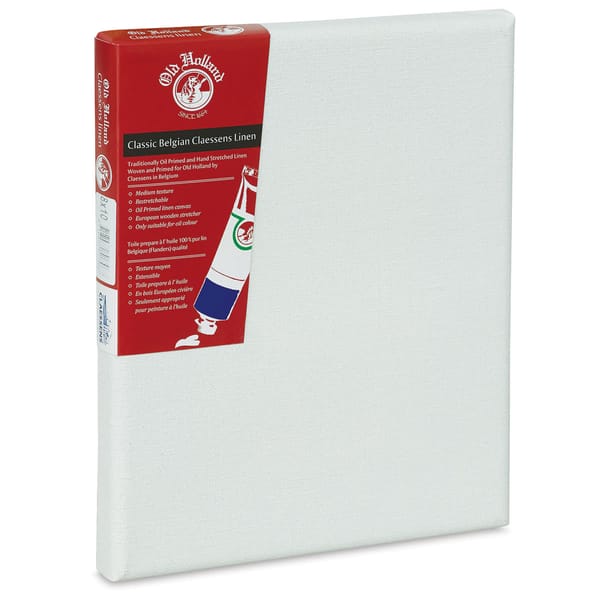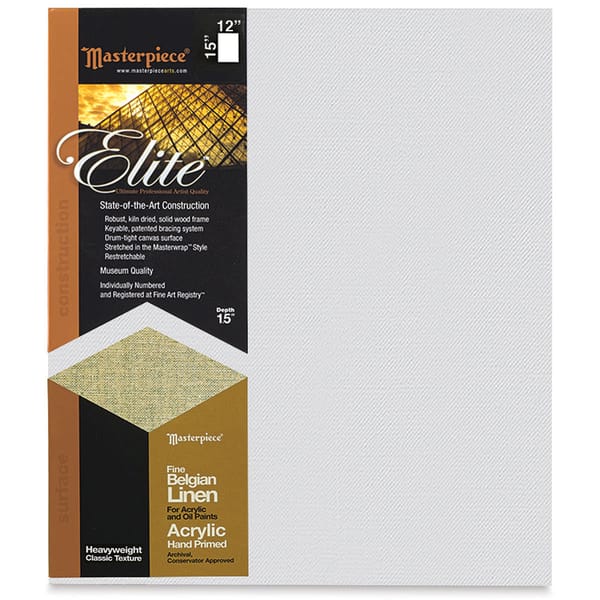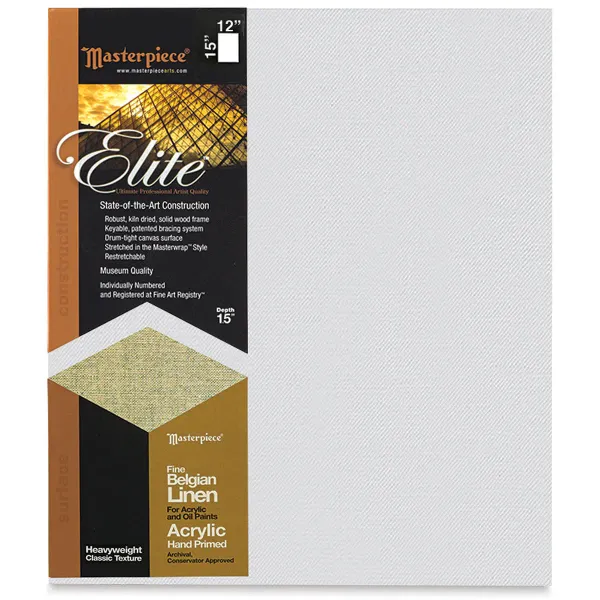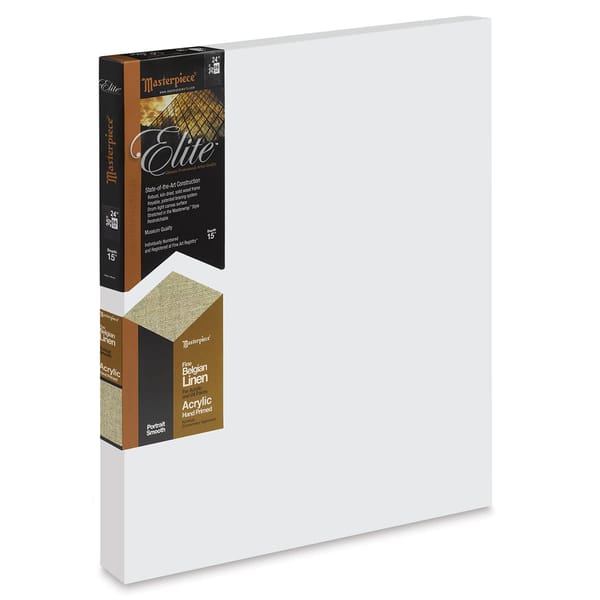Linen Canvas: Painter’s Choice for Superior Surface Quality
Linen canvas is a popular surface for painting, especially among professional artists. It's made from natural flax fibers, which makes it stronger and longer-lasting than cotton canvas. Linen has a tight, smooth texture that holds paint well and helps bring out fine details in artwork.
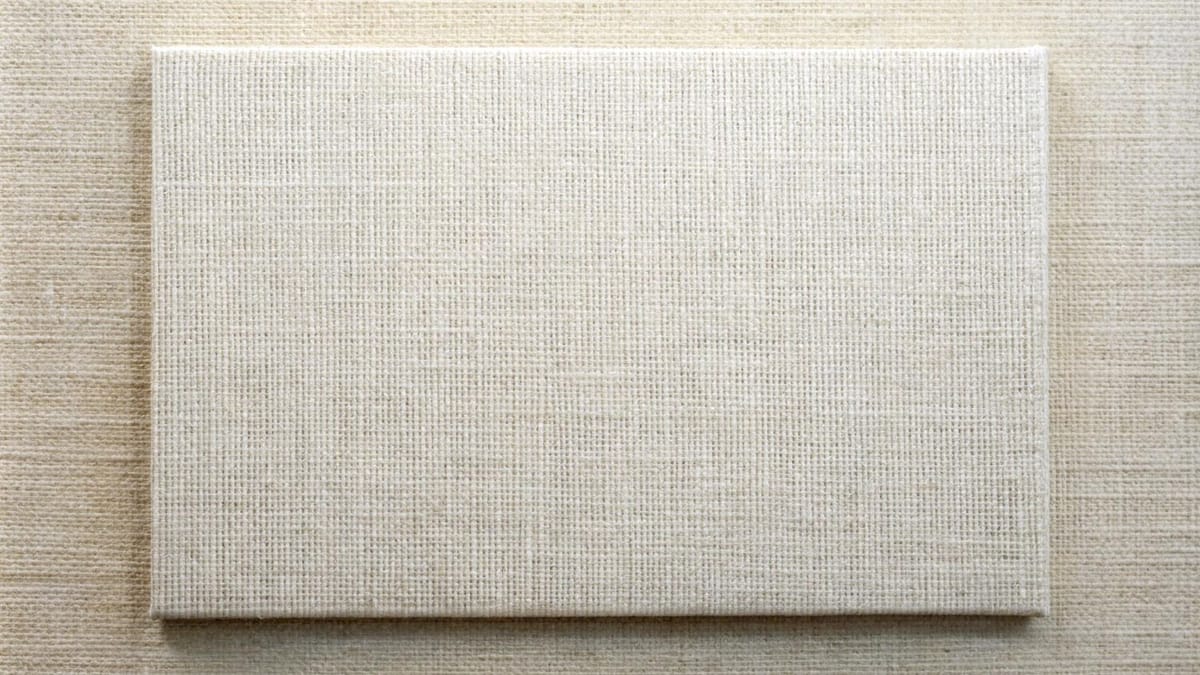
The surface you choose matters more than most artists think. From students just starting to seasoned professionals preparing for exhibitions, the right canvas sets the tone for every piece. That’s why many turn to linen canvas—a surface known for its stability, finesse, and long-term performance.
Woven from natural flax fibers, linen canvas brings a fine balance of strength and elegance. It handles detail gracefully, holds layers beautifully, and remains reliable under pressure—whether in the studio or in transit. It’s not just a surface; it’s a smart upgrade for artists who take their work seriously.
In this guide, we’ll help you understand what makes linen special, how to choose the right type, and which options best suit your practice.
What Is Linen Canvas?
Linen canvas is a premium painting surface made from the fibers of the flax plant. Artists have used it for centuries—thanks to its strength, natural texture, and ability to hold paint without warping or sagging over time. Compared to cotton, linen is tougher, more durable, and has a finer weave that responds better to detailed work.
Here’s why artists often choose linen over other materials:
- Stronger and more stable than cotton, even in changing humidity
- Naturally smoother surface with less visible weave
- Holds gesso or primer better for consistent paint flow
- More resistant to bending, stretching, and long-term wear
The texture and feel of the canvas can vary depending on the weave and priming. Some options are rougher for heavy brushstrokes, while others are ultra-smooth for portraits and fine detail. It’s also available in oil-primed, acrylic-primed, or raw formats—each one suited to different techniques and paint types.
In short, linen canvas isn’t just a material—it’s a tool that helps your art last longer, look better, and feel more professional from the first stroke.
Why Choose Linen Canvas for Painting Over Other Surfaces?
When quality matters, linen stands apart. Artists don’t choose it just for tradition—they choose it for performance. From paint handling to long-term durability, linen offers advantages that are hard to match with cotton or synthetic alternatives. Here’s exactly what sets it apart:
- Archival strength for decades: Linen’s natural flax fibers are stronger and more stable than cotton. This allows your paintings to hold up over time—even for generations—without sagging, cracking, or losing integrity. It's especially valued for museum-quality work or pieces intended for collectors and galleries.
- Superior surface for detailed brushwork: The fine weave of linen allows for smoother strokes, crisper edges, and better control over blending. Whether you're layering thin glazes or adding sharp lines, linen provides a surface that responds predictably—perfect for portraits, realism, or high-detail techniques.
- Minimal warping, even in humidity: Linen stretches tighter and holds its shape better in changing conditions. It resists environmental effects like temperature shifts or high humidity, making it ideal for studio use, outdoor painting, and long-term storage in varied climates.
- Absorbs paint with control: Linen takes in paint at a balanced rate, allowing you to work in layers without over-saturation or blotching. Oil-primed linen slows absorption for smoother glazes, while acrylic-primed versions offer grip and richness for bold strokes.
- Naturally textured but refined: Linen has a unique tooth that gives your brush or knife just enough feedback—without being coarse or uneven. You can choose different textures, but all offer a level of surface quality that’s rarely found in other materials.
- Preferred by master painters: From Renaissance artists to modern professionals, linen remains the gold standard. Its reliability, feel, and archival nature have made it the trusted surface for works intended to last, whether in personal collections or major exhibitions.
Types of Linen Canvas
Linen canvas for painting comes in more than one form, and knowing the differences can help you pick the right one for your painting style. From oil-primed to raw linen, each type offers a unique texture, absorbency, and level of preparation.
Oil-Primed Linen
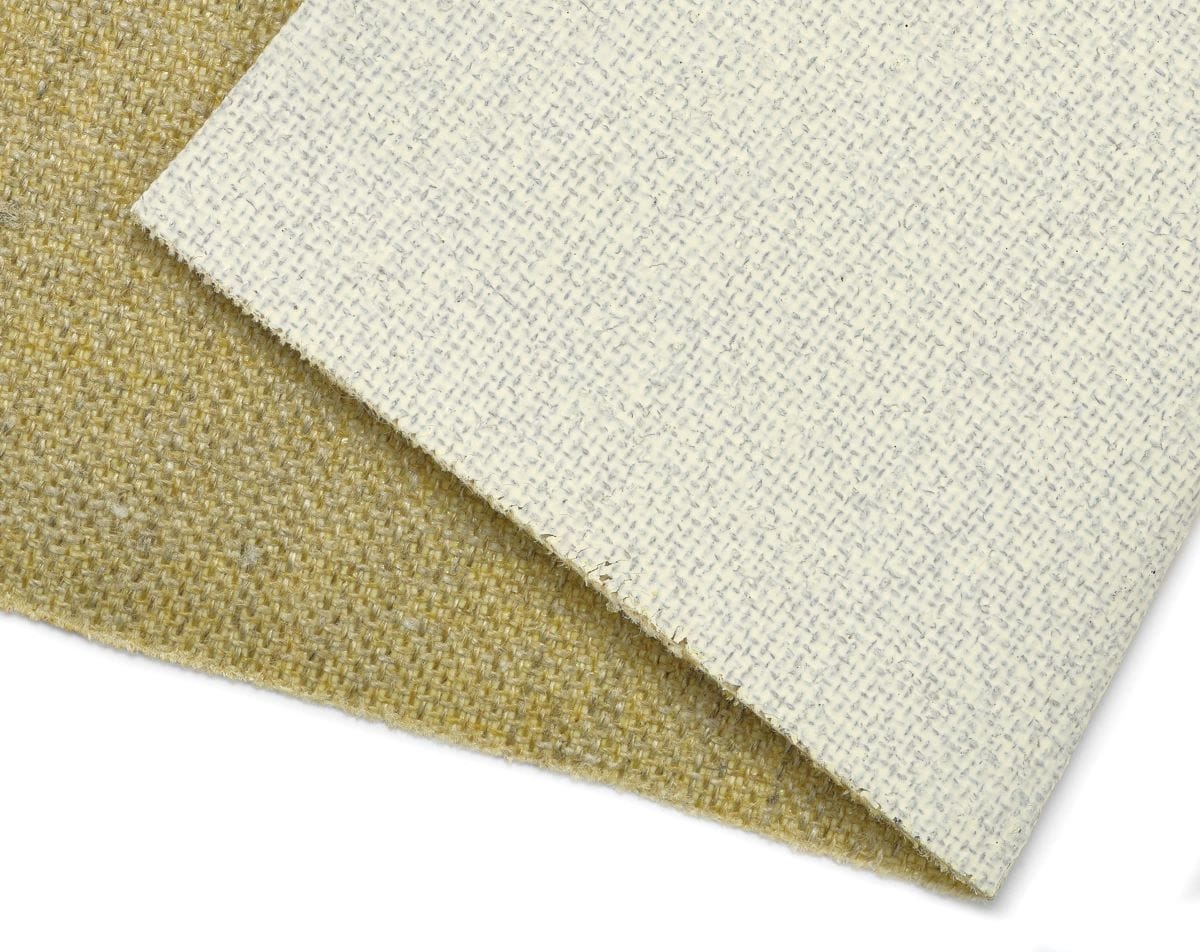
Oil-primed linen is coated with an oil-based ground, typically lead or titanium white, which gives the surface a slightly slick feel. This type is ideal for oil painters who want smoother blends, more vibrant colors, and less absorbent surfaces. The primer slows down paint absorption, allowing for wet-on-wet techniques and thin glazing layers. It’s less textured than acrylic-primed linen and feels more refined under the brush. However, it’s not compatible with acrylics or water-based media, so it’s important to match this type to your chosen paint.
Pros
- Great for layering and glazing in oil painting
- The surface remains open longer for blending and detail work
Con
- Not suitable for acrylic or water-based media
Acrylic-Primed Linen
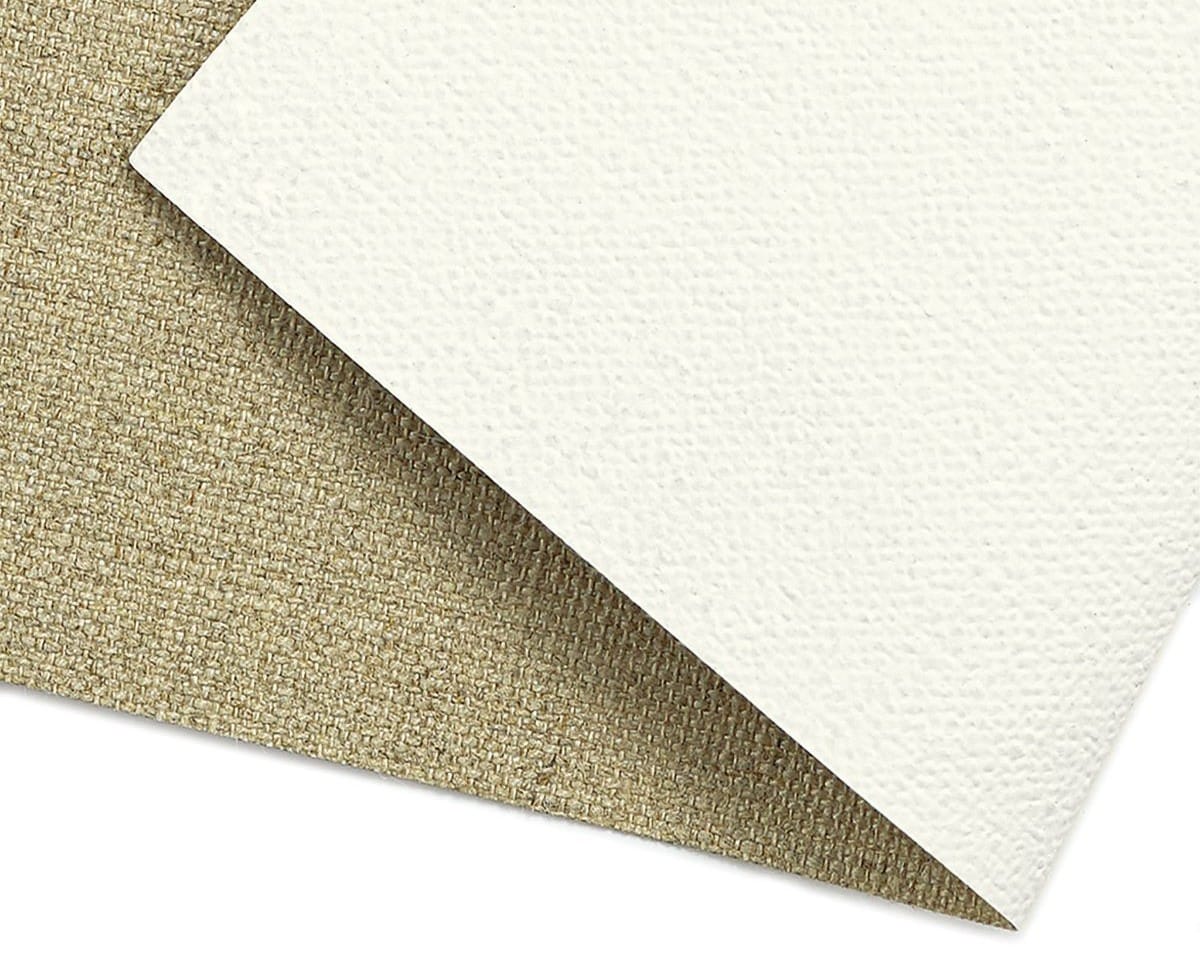
Acrylic-primed linen is sealed with an acrylic gesso, creating a more absorbent surface with a slight tooth. This makes it a great choice for artists working with acrylic paint, or those who want faster drying times. It holds the first layers of paint well, offering a solid foundation without being overly slick. While it’s versatile and ready-to-paint, the surface isn’t as smooth as oil-primed options, which might limit ultra-fine detailing depending on the weave.
Pros
- Compatible with both acrylics and oils
- Dries faster and gives a reliable grip for paint application
Con
- Less smooth than oil-primed, may not suit hyper-detailed work
Raw (Unprimed) Linen

Raw linen is untreated and comes in its natural flax state. It’s often chosen by experienced artists who want full control over their priming process or prefer the look of natural fibers under transparent paint layers. While raw linen offers total flexibility, it requires sealing and priming before painting. If not prepared correctly, it can cause paint to sink or rot the fabric over time. It's best used by artists comfortable with stretching their surfaces.
Pros
- Full control over texture and priming
- Natural surface ideal for custom techniques or transparent layers
Con
- Must be sealed and primed before painting
Universal Primed Linen
Universal primed linen is treated with a gesso that works for both oil and acrylic paints. It provides a practical solution for artists who use both mediums or who aren’t sure yet which one they’ll use for a project. The surface is balanced—not too slick, not too absorbent—offering a middle ground in texture and flexibility. It's beginner-friendly but still meets professional standards. However, the general-purpose nature means it may not excel at the extreme ends of detail or heavy texture work.
Pros
- Compatible with both oil and acrylic paints
- No need to choose a medium-specific canvas
Con
- May not deliver optimal performance for high-specialty techniques
Formats of Linen Canvas for Painting
Linen canvas isn’t just about surface quality—it also comes in different formats to match how and where you work. Whether you prefer convenience or customization, choosing the right form makes a big difference.
Pre-Stretched Linen Canvas
Pre-stretched linen canvas is ready to use right out of the box, making it a top choice for artists who value convenience and consistency. The linen is already stretched over a wooden frame, often gallery-wrapped with professional corners. This format saves time and reduces prep work—especially helpful in fast-paced studios or classrooms. It’s available in various depths and sizes, with oil- or acrylic-primed options. Though slightly more expensive than canvas panels or rolls, it offers a refined, ready-to-hang surface ideal for commissions, exhibitions, or professional portfolios.
Linen Canvas Rolls
Linen canvas rolls offer flexibility and value, especially for artists who work large or produce multiple pieces. Rolls let you cut custom sizes, stretch your own canvas, or mount it on rigid supports. You’ll often find them in raw or primed varieties, with various weights and textures available. This format is favored by experienced artists who want control over every stage of the process—from stretching to priming. While it requires more setup and tools, it’s cost-effective over time and perfect for large-format work or high-volume painting.
Mounted Linen Panels
Mounted panels are linen canvas adhered to rigid backings like wood, hardboard, or aluminum. They’re warp-resistant, travel-friendly, and especially useful for plein-air painting or detail-heavy studio work. The firm surface helps prevent flexing, which is important for precision techniques like glazing or fine line work. Some premium panels feature Claessens linen mounted on aluminum—ideal for professional-grade work that demands stability. Unlike stretched canvas, mounted panels don’t need framing or re-tightening, which adds to their appeal for on-the-go or exhibition-ready artists.
How to Choose the Right Linen Canvas?
Not every linen canvas for painting is the same, and the best choice depends on how you paint, what you paint with, and what kind of results you expect. Here are the key things to consider before making your pick:
- Match the canvas to your medium: Oil and acrylic paints behave differently on various primed surfaces. Oil-primed linen is ideal for oil paints, offering a smooth and slightly slick surface. Acrylic-primed linen works better for acrylics, providing grip and faster drying. If you work with both mediums, go for a universal-primed option. Choosing the wrong surface can impact adhesion, drying time, and final appearance. Always check the priming before you buy so your paint performs the way it should from the first layer.
- Consider the texture and weave: Linen comes in fine, medium, or rough textures, each suited to different styles. Fine weave linen is best for portraits and detailed work, while rougher textures suit landscapes or expressive styles. The weave affects how paint settles and how much brush texture shows through. If you're unsure, medium texture offers a good balance. Don't overlook this—many artists struggle with surface feel simply because they didn’t match their style to the texture.
- Choose a format that fits your workflow: Pre-stretched canvas is great for convenience and consistency, especially for commissions or classroom use. Rolls are more economical for large works or multiple paintings, giving you full control over stretching and sizing. Mounted panels offer stability for travel or detail-heavy work. Each format has strengths—what matters is which one matches your studio habits and project types.
- Look at the primer and absorbency: Acrylic primers create a more absorbent surface that grips the paint quickly. Oil primers slow absorption and are ideal for glazing, blending, and longer working times. Universal primers give you flexibility but may not perform as well with highly specialized techniques. Consider how fast you like to work and how many layers your process requires.
- Balance your budget and painting goals: Linen is more expensive than cotton—but for serious or long-lasting work, it's a better investment. If you’re painting for sale, competition, or archival quality, linen is worth the price. On the other hand, if you’re experimenting or learning, start with a budget-friendly pre-stretched linen to experience the feel without overspending. Know when to invest and when to keep it simple.
Our Linen Canvas Collection
We’ve curated a collection of premium linen canvas for painting trusted by professional artists across all levels. Whether you’re painting portraits, abstracts, or gallery-ready work, these products are built to deliver consistency, durability, and exceptional surface quality. Browse by brand below to find the one that fits your style.
Blick
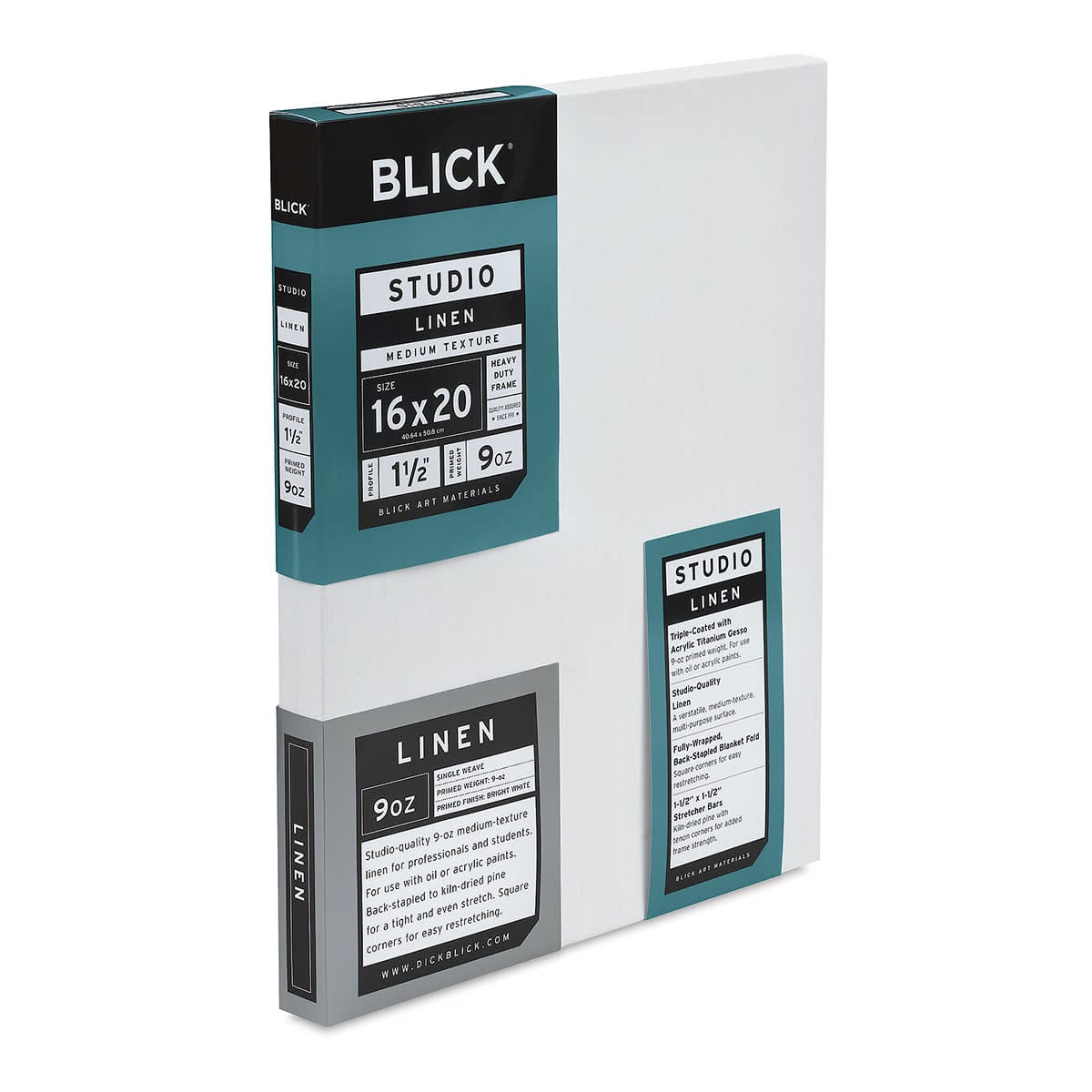
Blick Studio 100% Linen Stretched Canvas
A solid option for artists seeking an affordable, ready-to-use linen surface. Triple-primed with acrylic gesso, it’s great for acrylics and oils. Offers a natural tooth and a sturdy surface ideal for daily practice or classroom use.
Blick Premier Belgian Linen Canvas
Crafted with 100% Belgian linen and triple oil-primed for a smooth, luminous surface. Gallery-wrapped and ready to hang, this canvas is ideal for professional oil painters looking for premium quality and archival performance.
Old Holland
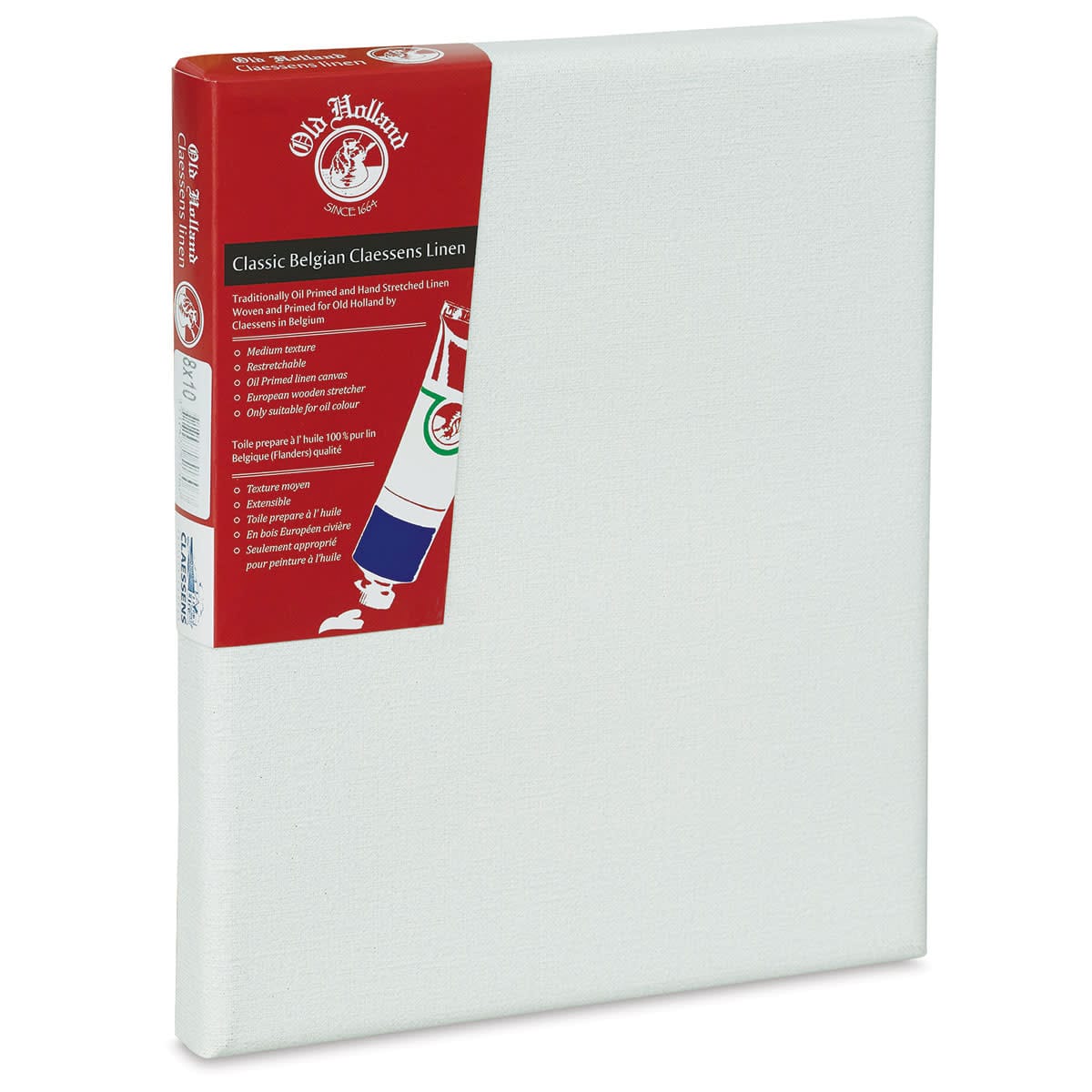
Old Holland Claessens Oil Primed Belgian Linen Canvas
Features Claessens’ world-renowned Belgian linen, oil-primed and hand-stretched for exceptional stability. With a medium texture and fine tooth, it supports rich color layers and detailed brushwork. Perfect for traditional oil techniques and long-term preservation.
Fredrix
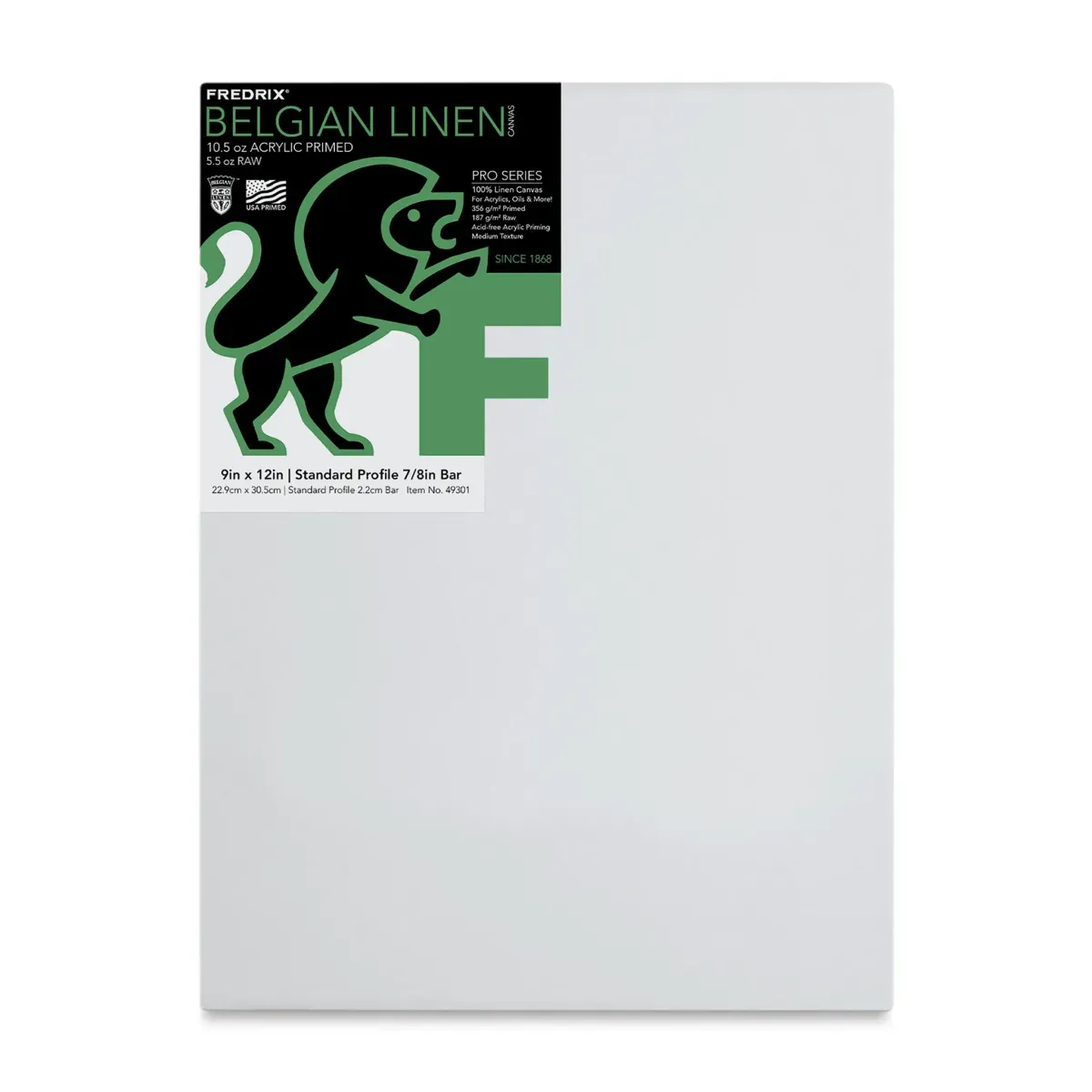
Fredrix Pro Series Belgian Linen Canvas
Made with heavyweight Belgian linen and double acrylic priming for a responsive painting surface. Stretched over kiln-dried bars and back-stapled for strength. Ideal for professional acrylic painters who want archival quality with a bit of texture.
Masterpiece
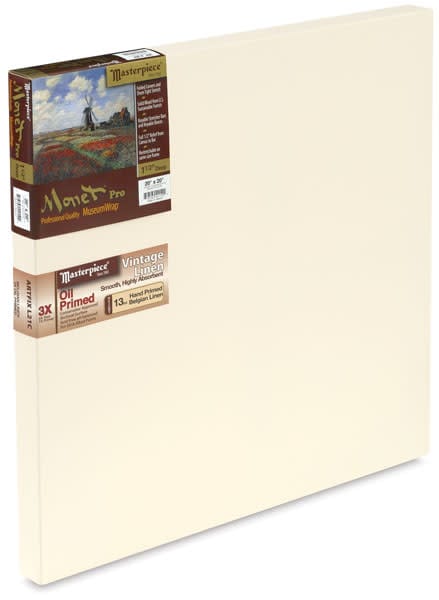
Masterpiece Artfix Oil Primed Linen Canvas
Archival-grade Claessens linen with a double oil priming for rich, smooth paint application. Built for serious oil painters who want exceptional control over blending and fine detail.
Masterpiece Elite Portrait Smooth Oil Primed Linen Stretched Canvas
Designed for portraiture, this ultra-smooth oil-primed surface minimizes texture and allows for delicate glazing and crisp edges. Museum-quality construction with kiln-dried wood bars.
Masterpiece Elite Portrait Smooth Acrylic Primed Linen Stretched Canvas
Same portrait-smooth linen, but primed with acrylic gesso for artists using acrylic paints. Ideal for mixed media and controlled brushwork, offering flexibility with a refined feel.
Masterpiece Elite Heavyweight Acrylic Primed Linen Canvas
Built with heavier linen for added strength and presence. Acrylic-primed with excellent tooth, perfect for bold strokes, palette knife work, or textured layers in acrylic painting.
Masterpiece Artfix Acrylic Primed Linen Canvas
Claessens linen with a universal acrylic ground, suitable for both acrylic and oil. Offers a smooth, reliable painting experience with professional-level construction and consistent quality.
Museo
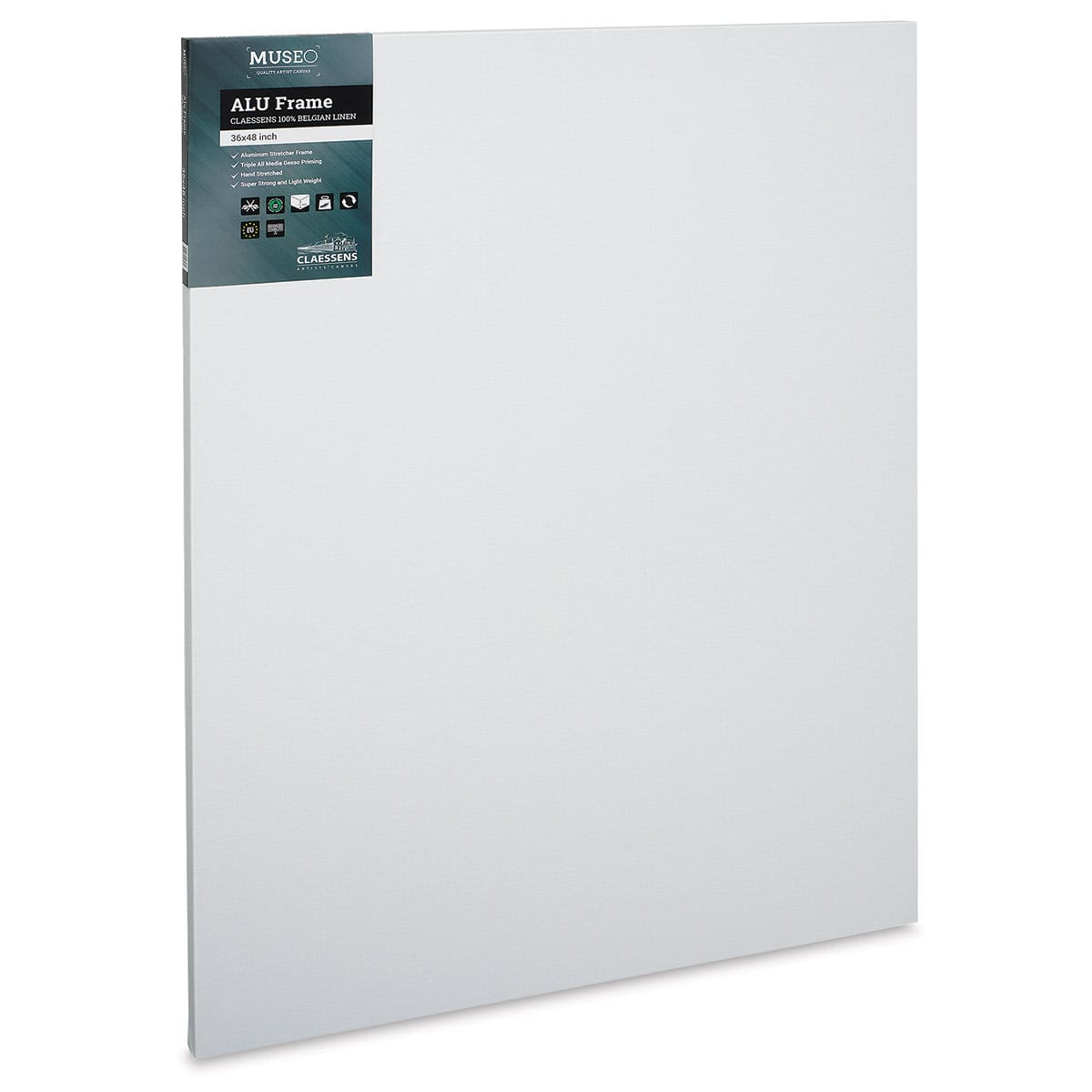
Museo Alu-Frame Claessens Belgian Linen Canvas
Features premium Claessens oil-primed linen mounted on a lightweight aluminum frame. Extremely stable and warp-resistant, this option is perfect for large-scale or travel-ready professional work.
Tips for Painting on Linen Canvas
Linen canvas responds differently than cotton—and knowing how to work with it can make a big difference in your results. From brush handling to layering, these tips will help you get the best performance and finish from your linen surface.
Let the texture guide your technique
Linen has a natural tooth that holds paint well, but how you use that texture depends on your style. For smooth portrait work, choose fine-weave linen and use soft brushes for subtle blending. For textured work or landscapes, a medium or rough weave can add visual energy. Try dry brushing or layering with a palette knife to emphasize the surface’s character. Let the canvas do part of the work—the more you adjust your technique to the texture, the more natural and expressive your results will look.
Understand how priming affects paint flow
Understanding the right priming technique is important for a proper paint flow. Oil-primed linen gives you longer working time and smoother blending, making it ideal for traditional oil techniques like glazing. Acrylic-primed linen absorbs paint faster and supports layering with less drying time between coats. Universal-primed linen offers flexibility but will behave differently with each medium. Knowing your primer type helps you adjust your brushwork, drying time, and layering process. Don’t overcompensate—work with the primer’s natural behavior instead of fighting it. Always test a small corner if you’re unsure how your paint will respond on a new surface.
Build up your layers with intention
Linen’s strength makes it perfect for layered techniques, but it’s best to build up slowly. Start with thin washes or underpainting to establish values and composition, then layer thicker paints or glazes. This controlled buildup helps avoid cracking, especially with oil paints. Let each layer dry fully before applying the next—linen is stable, but poor layering can still lead to surface tension. Use a balanced approach: don’t overload the surface early, and save your thickest strokes or highlights for the final layers.
How to Care for Linen Canvas
The canvas is strong, but like all professional tools, it needs proper care to stay in top shape. Follow these simple steps to protect your artwork and make your canvas last for years—even decades.
1. Store your canvas properly
Always store linen canvas upright in a dry, clean space. Avoid leaning it against walls where it can warp or pick up moisture from the floor. If you’re storing multiple canvases, separate them with acid-free paper or cardboard to prevent sticking or pressure dents. For unpainted or raw linen rolls, keep them loosely rolled and covered to avoid dust and creases.
2. Protect from humidity and temperature changes
Linen is naturally more stable than cotton, but it still reacts to its environment. Keep your canvas in a space with stable humidity and moderate temperature. Avoid attics, garages, or basements. If you live in a humid climate, consider using a dehumidifier in your studio or storage area to prevent mildew or loosening of the fabric.
3. Clean with care
To remove dust, use a soft dry brush or microfiber cloth—never water or cleaning agents. For finished paintings, consider using a light museum duster. If something spills or stains the surface, contact a conservator before attempting to clean it yourself. Linen can absorb liquid quickly, and improper cleaning may damage the surface or the primer.
4. Handle your canvas with clean hands
Natural oils from your skin can stain raw or primed linen over time. Always handle canvas by the edges or wear gloves if possible, especially before it's painted. This is even more important when working with oil-primed linen, which can pick up smudges easily. Don’t press or stretch the surface while moving it.
5. Use proper framing or backing for support
To prevent sagging, especially in larger pieces, use crossbars or framing that provides adequate tension. If you’re mounting linen on rigid panels, make sure the adhesive is archival and evenly applied. Once stretched or mounted, avoid re-stretching unless absolutely necessary, as it can damage the weave.
Final Words on Linen Canvas
Linen canvas isn’t just for experts, it’s for any artist who values lasting quality, surface control, and professional results. Whether you're painting portraits, abstracts, or landscapes, linen gives you the foundation to work with precision and confidence. Its natural texture, superior strength, and archival-grade durability make it a worthwhile upgrade for serious painters.
From pre-stretched options to premium Belgian rolls, there’s a linen surface that fits every style and studio setup. And with trusted brands and detailed product info, finding the right one has never been easier.
Your art deserves a surface that works as hard as you do.
Frequently Asked Questions About Linen Canvas
Is Linen Canvas Better Than Cotton?
Yes. Linen is stronger, more durable, and holds its shape better over time. It’s the preferred choice for professional artists who want a smoother surface, longer lifespan, and better archival performance compared to cotton canvas.
Can Beginners Use Linen Canvas for Painting?
Absolutely. While it’s more expensive than cotton, linen is easy to paint on and offers a better surface for learning. Many beginners start with pre-stretched linen to experience the benefits without needing to prep or stretch it themselves.
Do I Need to Prime Linen Canvas?
Only if it’s raw (unprimed). Most linen canvas sold today is pre-primed with either oil or acrylic gesso. Always check the label—unprimed linen must be sealed and primed before painting to prevent paint from damaging the fabric.
Can I Use Acrylic Paint on Oil-Primed Linen?
No. Oil-primed linen is meant for oil paints only. Acrylic paint won’t adhere properly to the slick surface. If you're working in acrylics, choose acrylic-primed or universal-primed linen instead for proper grip and performance.
Why Is Linen Canvas More Expensive?
Linen is made from flax, which is harder to grow and process than cotton. The weaving and priming process is more refined, resulting in better quality and longer lifespan—making it a smart investment for serious artists.
